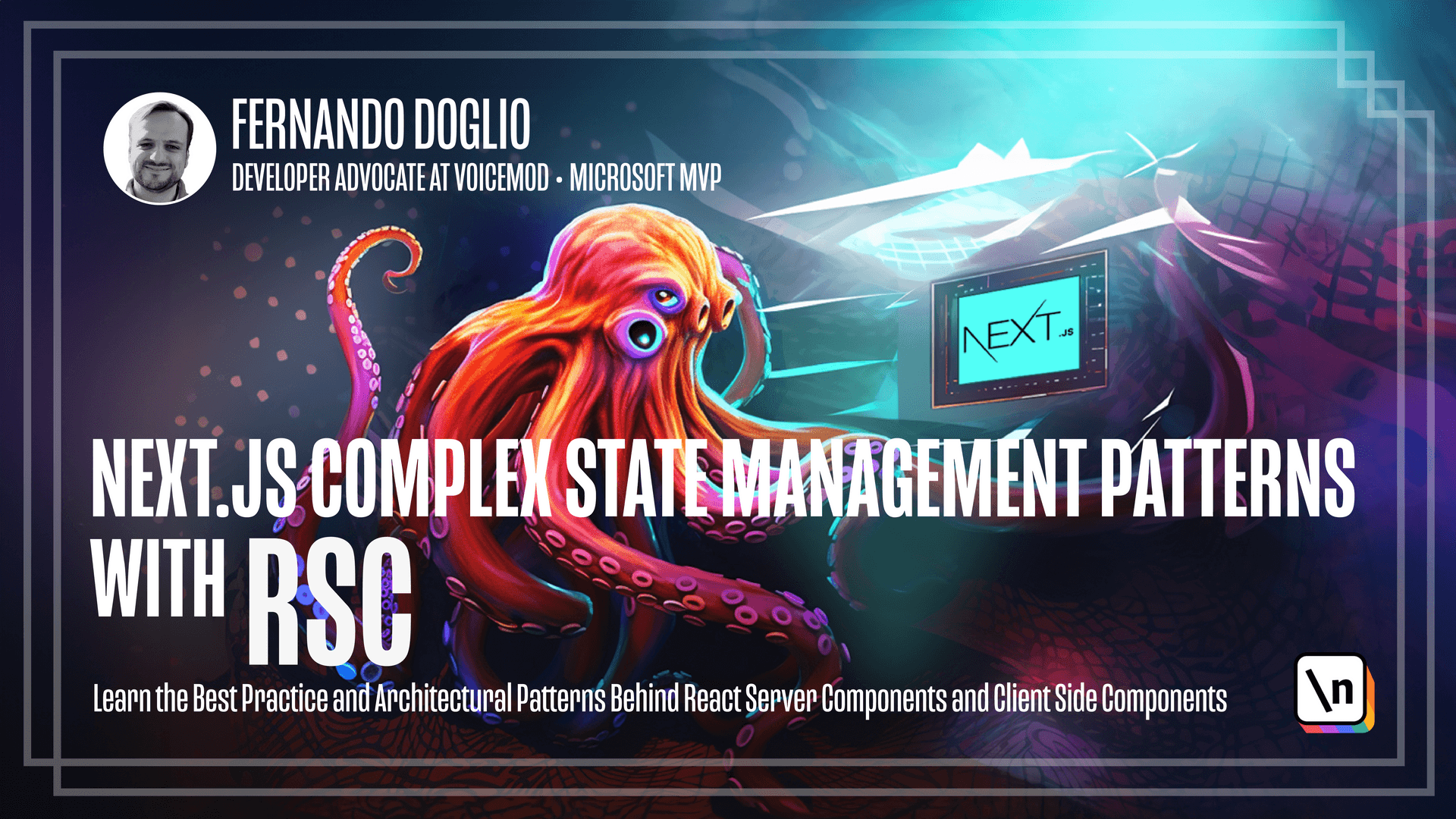This lesson preview is part of the Next.js Complex State Management Patterns with RSC course and can be unlocked immediately with a \newline Pro subscription or a single-time purchase. Already have access to this course? Log in here.
Get unlimited access to Next.js Complex State Management Patterns with RSC, plus 90+ \newline books, guides and courses with the \newline Pro subscription.

[00:00 - 00:46] Hey there everyone, can you believe it? We've reached the end of this journey throughout the exciting and intricate work of state management with server components in NextJS From the basics of React's state to the advanced strategies of handling data in modern web applications, we've covered a lot of ground together. Now I'd like to quickly recap the key points that we covered throughout the course and share some final thoughts with you all, if you don't mind. We started this course with a deep dive into the fundamentals of state in React understanding how stateful logic works and how it can bring your application to life. We examined local state, shared state, server state, even global state, learning to recognize how and when to use each type.
[00:47 - 01:20] Then we delved into the new features of NextJS, such as focusing on server components, client components and the game-changing way in which they interact with each other. Later we reviewed some state management patterns and strategies. We compared traditional methods, like React context. We also tackled fetching data from server and handling authentication and even managing internal API endpoints in NextJS. Finally, we faced the challenge head-on, dealing with state within server components and sharing that with client components.
[01:21 - 02:29] Understanding the role cookies for state persistence and even diving into the nitty gritty of server-side APIs and hydrated state. As we wrap up, I want to encourage you to keep exploring, keep experimenting and most importantly, keep coding. The web development landscape is constantly evolving and NextJS 13 and 14 now is a clear example of that You're now equipped to tackle all these problems head-on with confidence and creativity. If you have further questions after the course, remember that you can still reach out to me throughout newlines' discord server and if you want to get in contact directly, you can always find me on Twitter. I love to see what you build after going through the course and help you with any doubt you might have. Thank you again so much for joining me on this learning adventure. Whether you're building a small side project or a large-scale production application, I hope the concepts and techniques from this course will serve you well. Feel free to revisit any lesson whenever you want to and don't hesitate to reach out if you have further questions. And remember, this isn't goodbye. It's just the beginning of the even greater development to come.
[02:30 - 02:37] So keep on building, keep pushing boundaries and most of all, stay passionate about your craft. See you around.